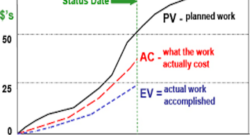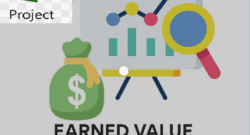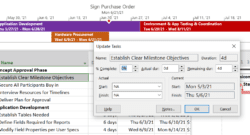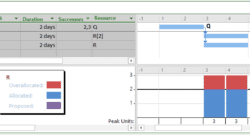Projects: Managing Costs
Gain insights into effective budgeting and cost control strategies. Learn how to manage project costs, track expenses, and optimize budget allocation for project success with MPUG’s resources.
Earned Value Management (EVM): A Roadmap to Project Success
Earned Value Management (EVM) is a project management methodology that integrates scope, schedule, and cost elements to provide a holistic view of project status. Learn how EVM works, its historical c...
A Beginner’s Guide to Understanding Earned Value Management
Learn the fundamentals of Earned Value Management (EVM) and discover how it provides a powerful tool for project managers to measure progress and make informed adjustments.
Introduction to Earned Value Formulas
Earned Value Management (EVM) helps you assess project performance based on cost and schedule metrics. This introduction explains key EVM formulas, including Earned Value (EV), Cost Variance (CV), and...
Why Earned Value Management is Important
This article discusses the definition of earned value and the five reasons why earned value management is important to project success.
Understanding Earned Value Fields
In the first article of this series, I discussed the importance of Earned Value Management, or EVM, which evaluates the performance of your project in terms of its schedule, cost, and work. Earned val...
Time is Money: The Importance of Earned Value Management
In my previous article, I discussed the importance of a baseline, and how, without one, a PM doesn’t have a yardstick, per se, to measure with. Project Management presents many tools and techniques fo...
Misconception #4: Managing Resources in Project is Too Hard
Managing resources in Project is certainly not simple. If you’ve worked in Primavera or other scheduling tools, you know there’s even more complexity for how to utilize resources. Of course, there are...
Multiple Views into the Same Project File
Different views into the same MS Project file enables us to see a schedule from multiple perspectives. Using the split view feature is one way to do this. The Project window is split into two panes, w...
Sharing Resources Across Multiple Projects
A resource pool can help you see how resources (i.e., work or materials) are used across multiple projects, so you will be able to track costs per plan, as well as the cumulative costs across multiple...
- 1
- 2









